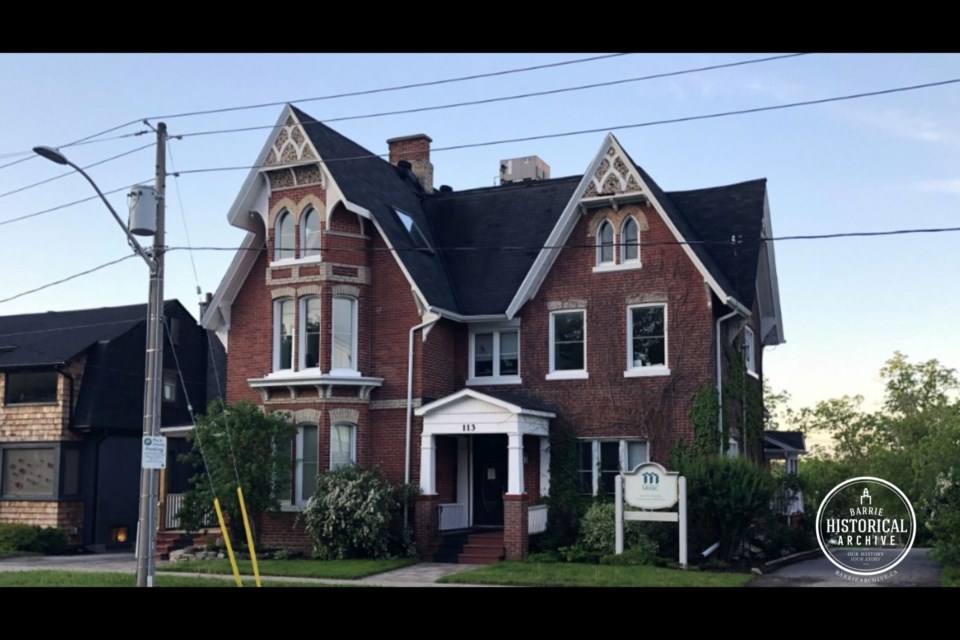It was easy to become an outlaw of legend at that time. These were the days of Billy the Kid and Jesse James, both of them notorious and larger than life during the latter part of the 19th century.
Alexander ‘Sandy’ McDuff was no different.
The story of his life is also a mix of truth and tall tales punctuated with time spent in prison, years on the run and unverified sightings. He was pegged for crimes he didn’t commit and never brought to justice for plenty more that he likely did have a hand in.
And a large hand it was in more ways than one. ‘Big’ Sandy McDuff he was often called. He reportedly stood well over six feet, an unusual height in those days, and was described as a large and powerful man. McDuff was very athletic and that fact is no fish story as his numerous first prizes for sports were well documented in the local newspapers.
Yes, Sandy McDuff was a local lad. His people were honest Highland Scots from Oro Township just trying to eke out a living from their farm like everybody else. Perhaps that slow method of making no fortune at all didn’t appeal to Sandy and he had another plan in mind.
A heavily forested wetland northeast of Edgar was known locally as Black’s Swamp and it was from there that a gang of marauders, headed by McDuff, reportedly operated. From this headquarters, the group fanned out and nabbed chickens and sheep, grain and vegetables from neighbouring homesteads.
Meanwhile, McDuff gained a reputation for becoming extremely violent when under the influence of whisky, which was often. He demanded free drink at taverns all over the county and then trashed the place when the inevitable brawl followed.
Local folks feared him and, not surprisingly, few were willing to report him to law enforcement nor testify at any trials. County constables, accompanied by a posse, sometimes thought better of confronting McDuff or his gang and turned back before attempting to arrest any of them.
In 1877, Sandy McDuff was wanted for attempted murder and a series of lesser but serious crimes. The story goes that six law men were sent to bring him in and they were well trounced by their quarry and sent back to Barrie without him.
Chief County Constable Joseph E. Rogers was outraged and vowed to bring McDuff in himself no matter what it took. In the summer of 1878, he saw his chance.
It was learned that McDuff would be attending a barn raising party just outside of Coldwater. Rogers took only his son, Joseph Jr., and Const. Tom Shannon with him that night, and hoped for the best. Fortunately, McDuff was sober when found as he was an entirely different creature when inebriated. Chief Rogers held the party-goers at gunpoint while the other two men surprised McDuff from another direction and put him in irons.
In September 1878, McDuff was tried at the Barrie Courthouse by Judge Gowan for assault causing grievous bodily harm. He had allegedly visited the tavern of Jeremiah Orser at Jarratt’s Corners two years earlier, already drunk and harbouring some kind of grudge against Orser.
After being served more whisky, McDuff was said to have attacked the tavern keeper and broken one of his ribs. A key witness was a constable who had declined to intervene out of fear.
McDuff had two high-profile lawyers, Mr. Lount and Mr. Pepler, who produced a defence based on the idea that their client was insensible due to the liquor served to him by Orser, who had known McDuff was already intoxicated.
Judge Gowan said that drunkenness was no excuse for this crime or any other but he took into consideration the fact that Orser continued to give McDuff alcohol, knowing full well what the outcome was likely to be. Sandy McDuff was given one year at the notorious Central Prison in Toronto, and Simcoe County was given one year of peace.
After that, the McDuff story gets murky. He was sometimes seen around the county in the years that followed – or was he? Tales were told about his escape to western Canada or perhaps it was New York City, a new life in Germany or his death in a barroom gunfight in Mexico.
The man called the ‘Terror of Simcoe’ became the stuff of legends.
This column is provided by Barrie Historical Archive.
